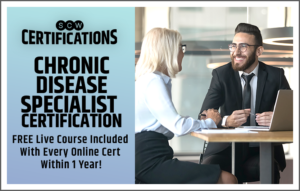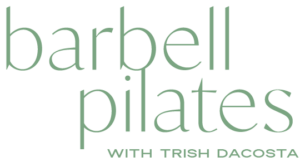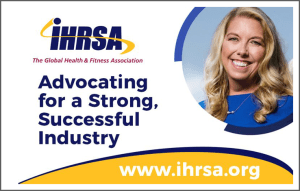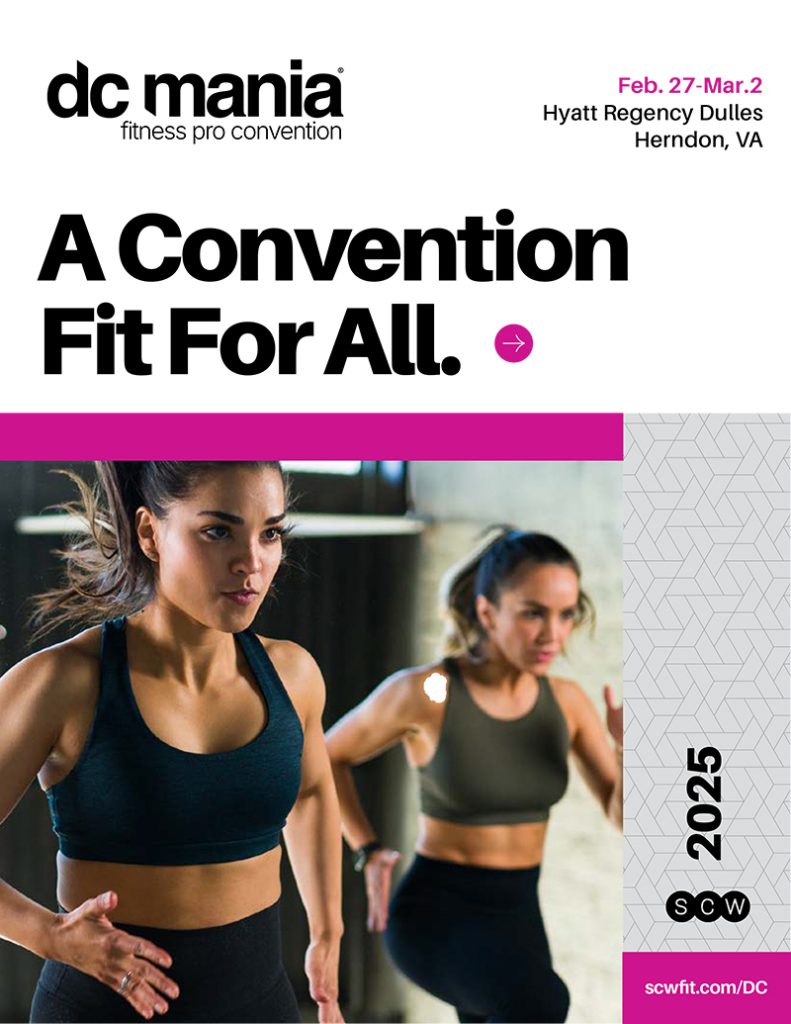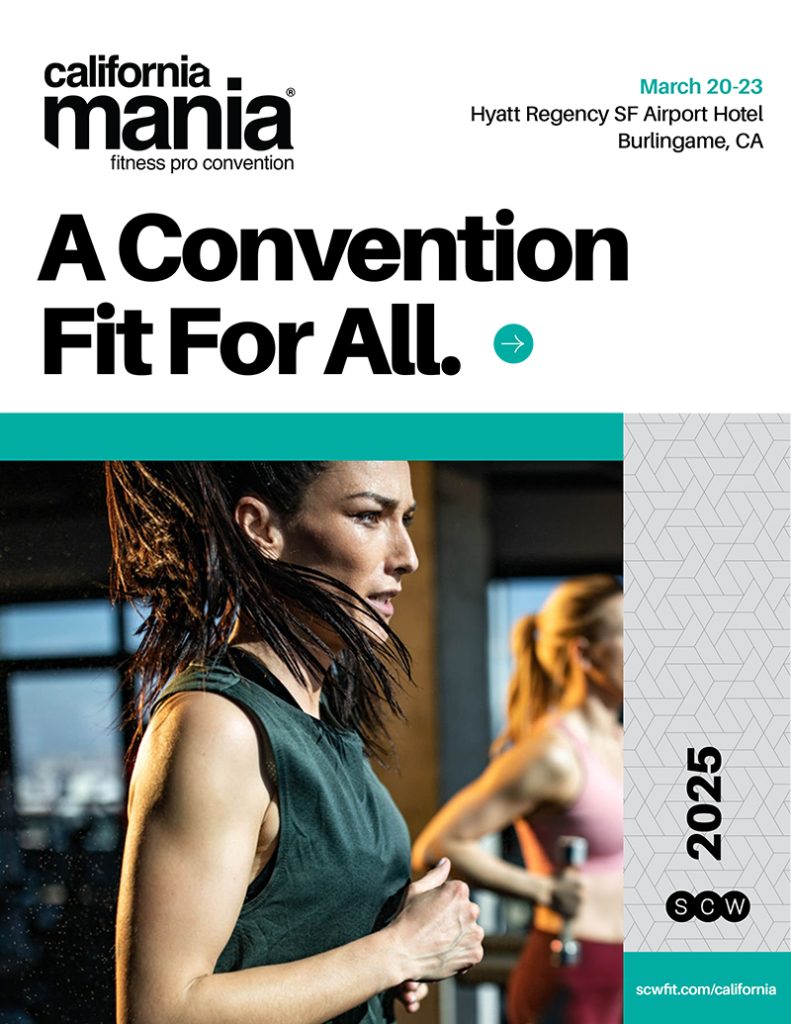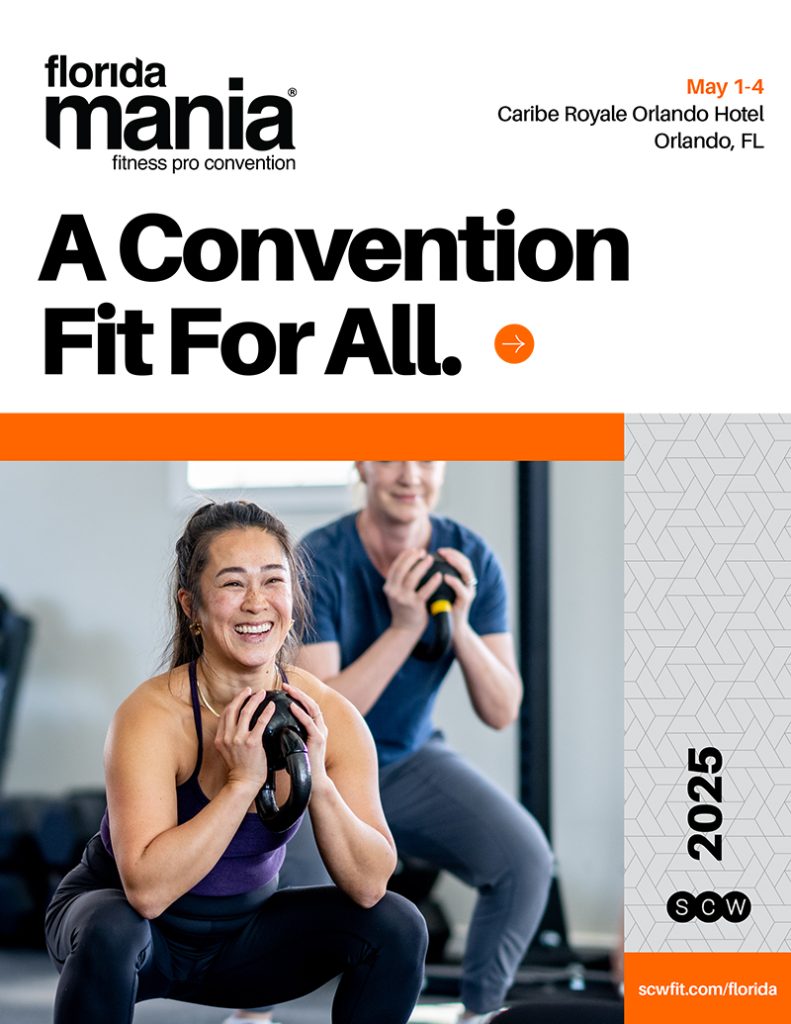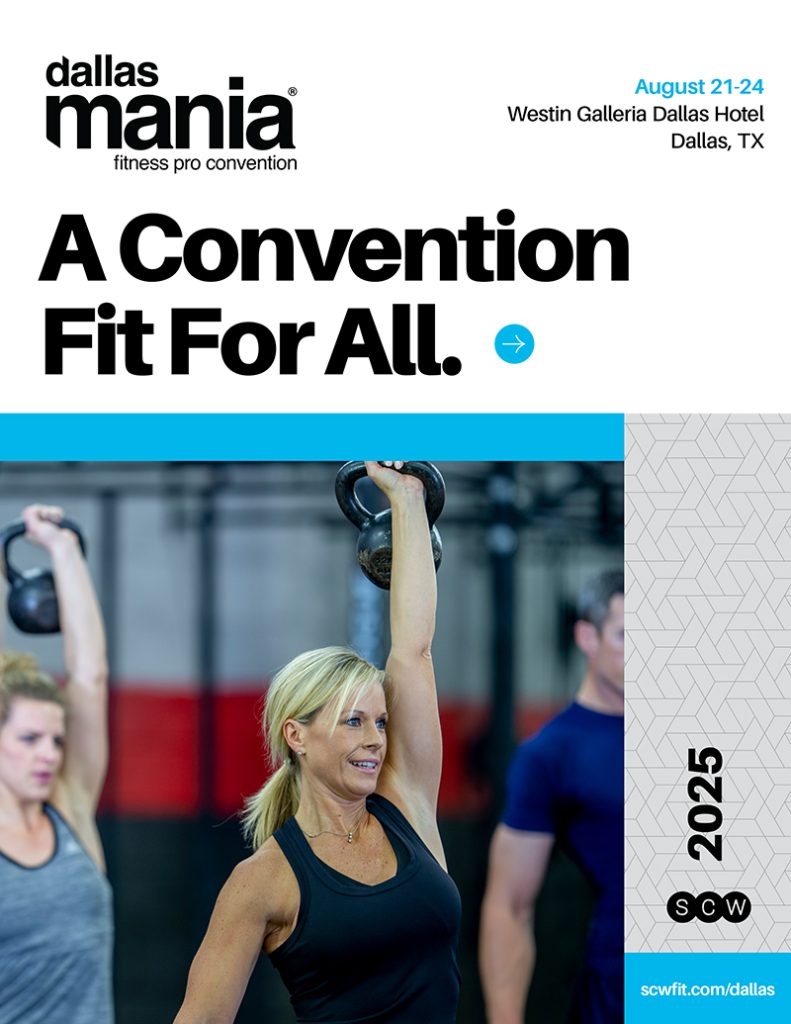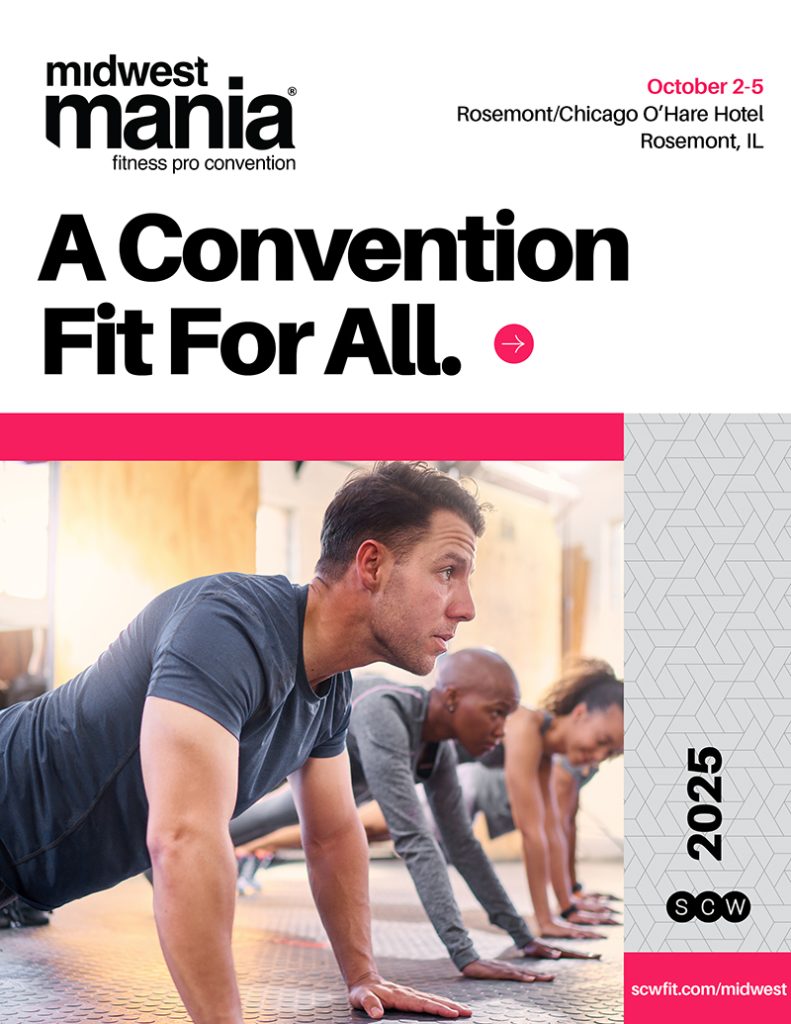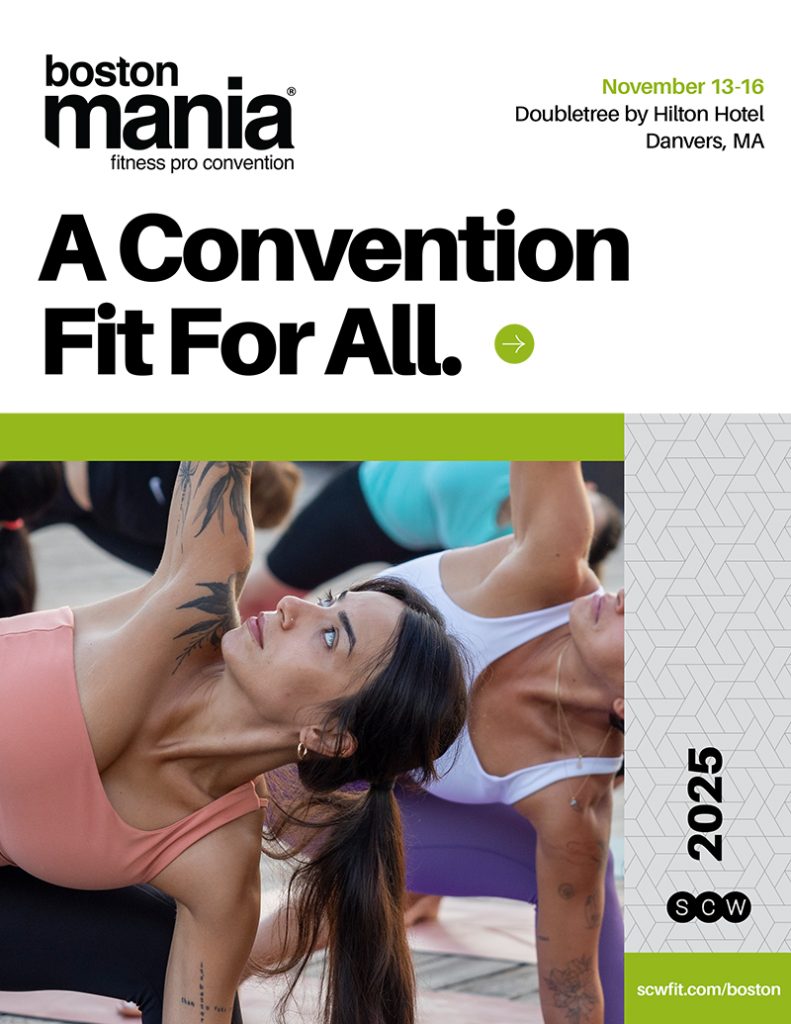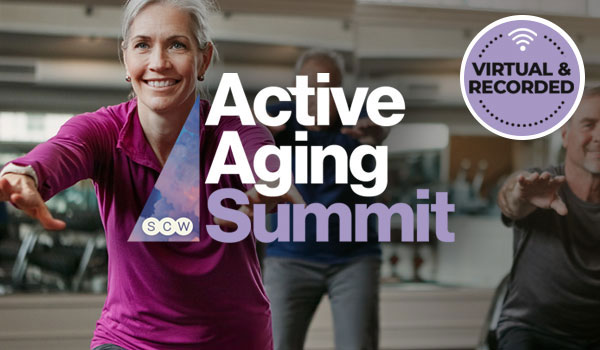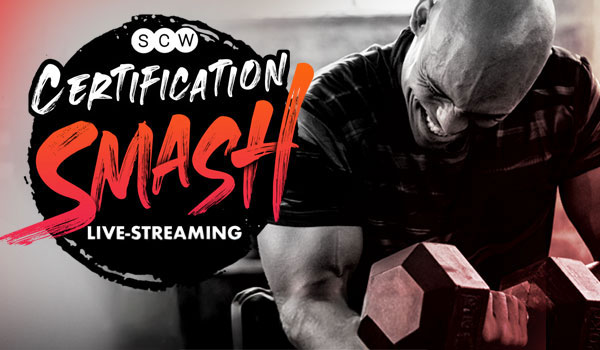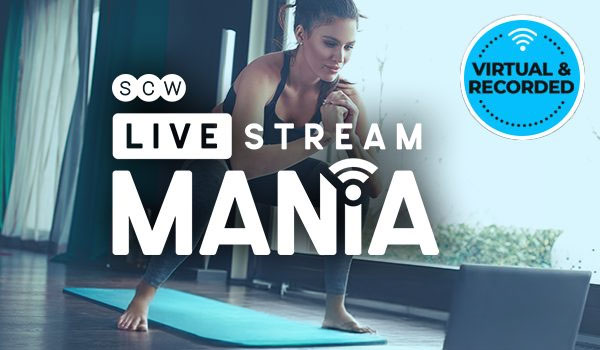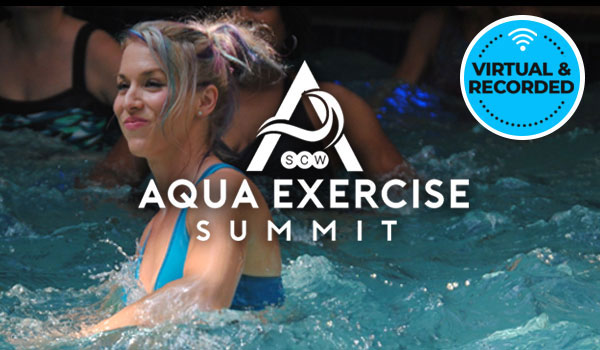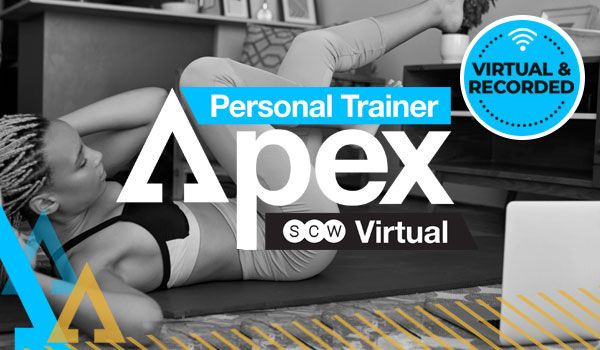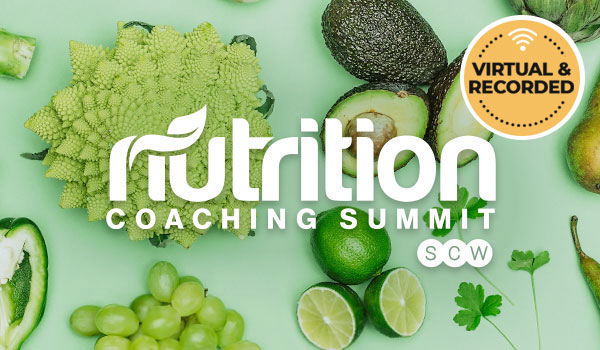
SCW Spotlite: Issue 56

Fitness as Wellness
by Sara Kooperman, JD
Growing up as a child in the 1960’s, 70’s, and 80’s, U.S. public schools required children to take yearly President’s Physical Fitness Assessment Tests. It was essential to make sure youth achieved necessary fitness levels to pass as ‘healthy.’ Yet today, fitness is deemed “non-essential” by government regulators and other health care experts. Interestingly, a study recently published in the American Journal of Preventive Medicine (Dec 2022) advocates that those who suffered the least and experienced less severe outcomes due to illness, and complicated infections including death from COVID-19, were individuals who were physically active before the pandemic. Exercise is conclusively seen it as an extra layer of protection against disease and unforeseen illness. As a result, it appears that many people are finally now prioritizing fitness.
The fitness industry has changed. Its focus is no longer just about ‘losing weight or body fat’, its direction has shifted to health and wellness. Exercise is not firmly a part of the health continuum. Many fitness facilities and individuals have adopted a more professional wellness persona. Health clubs and trainers no longer view their profession as an appearance-only business or a money-grab (buy-my-membership) institution, the direction is now a solution to our health crisis. Fitness centers and teachers are committed to be part of a wellness offering and even more so, part of the medical community.
Back in the 1980s, fitness was all the rage, and society viewed this industry with excitement. It was popular to be a group fitness instructor (hence Jamie Lee Curtis in the movie Perfect.) Personal trainers were not even an option yet. Then over the next several decades, fitness grew with a frenzy. Health clubs exploded, turning fitness into a true money-making business causing a glut of fitness centers to open. Then the pandemic struck, and thousands of clubs and studios closed (25-30% mostly boutique and small centers), but while COVID-19 decimated the fitness club, ironically this same decease woke up the medical community to the value of exercise. Doctors, physical therapists, social workers, psychologists began to enthusiastically emphasize the value of physical fitness as it relates to building both mental and physical health. This epiphany awakened society, making wellness the focus of physical exercise.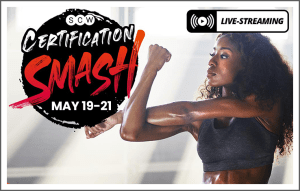
Fitness has a different meaning and purpose to society depending on who promoting it. Health professionals see exercise one way and fitness pros look at it from a different position, but ultimately everyone is and should be focusing on wellness, building immunities, and emphasizing quality of life. It is not about how big your muscles are or how small your waist is. It is about how you feel and what you can do. One of the benefits or silver linings of the pandemic, was that fitness became evident to much of society that health and wellness does not need to be extreme. It is attainable to all. A simple short walk several times a week is enough to keep you healthy. Our “fitness viewpoint” has shifted and must continue in this direction. The goal is to improve your Activities of Daily Living which in turn will dramatically improve your general quality of life.
Now there is a growing demand for fitness professionals, and these professionals must be qualified. As a result, certification is a must. The pandemic brought about virtual training and virtual education. Online and live stream programming became the norm and SCW Fitness Education was luckily fully prepared to transition to online education. SCW built and hosted the first Live-Stream Fitness Convention in the virtual world. Thankfully, this pivot from in-person to online provided the opportunity for many not involved in the fitness education community to become certified and educated.
The workforce scarcity is hitting everyone, and in particular, our industry. Currently, there is a shortage of instructors and trainers. Many instructors and trainers left the fitness altogether during the pandemic because of closed clubs. And sadly, many club owners lost touch with their front-line workers, specifically their group exercise staff and personal trainers.
Hence, we need staff, and this staff must be educated and prepared to deal with both the fit and more importantly, the unfit. Group exercise staff and personal trainers must be certified.
There are many levels of certifications that individuals can attain, and this is important. We need these different entry points. What is worrisome about the certification industry right now is a claim that only certain certifications must be accepted. Unfortunately, many do not require (or specifically do not want) practical live training, some actually (and specifically) exclude it from their education. To help grow the shrinking fitness industry, a variety of courses, levels, and prices need to be offered to entice new folks to enter the industry and enhance the portfolios of those already invested. Right now, the goal must (and should) be to inspire new instructors and trainers to join our forces and work in our industry.
For anyone interested in entering the fitness world, luckily there aren’t too many barriers they need to break. With the variety of educational options available, and the different paths that are offered, we should be able to fill the open positions at health and wellness facilities. Being able to get trained in your state, in your club, and even in your home makes for accessible training and quality opportunities.
When looking for a trainer or instructor, consumers should be trained to pay attention to their GXI’s and PT’s education and certifications, making sure they are current. Most certifications must be renewed after two years and unfortunately many instructors have let theirs lapse over the pandemic. Clients should also look for specialized training that correlates to their age and ability, but more than anything, look for the professional’s dedication to health and wellness. And anyone promoting a quick fix should be avoided.
Our industry must support a variety of certification options but must also pay close attention to educating the public on the value of a certified professional. We must lead the charge on informing society of our commitment to quality.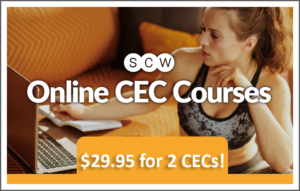
The pandemic also adjusted the way people viewed social media. More and more people communicated through social media and sought information through social media. There was a huge growth of “influencers,” content providers who reach thousands, if not millions of followers. If you were (or are) beautiful, sexy, and young … then you can influence. Many of these influencers were and are untrained, causing a negative effect on the outlook in both the physical and virtual worlds. They often demonstrate and promote unsafe and untested exercise programs that may result in injury.
Further, in the past, as well as now, there seems to be a dichotomy of focus for our industry. Some fitness facilities concentrate on health and wellness, and others focus on appearance, splitting between virtual and real life. With this being said, kudos to the experienced instructors educating people online as a way to entice the unfit to train. I guess you could say social media has both a negative and a positive influence on the fitness industry, inspiring people of all ages, ethnicities, sizes, and abilities to move.
The biggest question post pandemic is “How do we make fitness part of the healthcare continuum?” First, we need to gain the respect of the public health agencies and the general public. And more importantly, we must start with gaining the respect of our OWN industry. Our front-line workers, the group ex instructors, and personal trainers are sorely underpaid and under-respected. In order to legitimize fitness, these workers need to be paid more so that they can afford the training that they need. Additionally, a salary bump will also attract quality people to these much-needed professions.
In the past, there has been a push to have the government license group fitness instructors and personal trainers. Unfortunately, this is an incredibly expensive endeavor. The U.S. government, may never take this approach (although the UK and Canada have.) The USA simply does not have the funds (especially after the pandemic.) Furthermore, with the pressing inflation, this may never happen. Therefore, it is up to us to self-regulate. Which means that we, as an industry, need to self-manage this process and set our own standards.
The United States is a capitalist society, so those who are good, get paid, but those who are great, get paid better. It’s a pretty simple. So, if an instructor attracts people to their class, then they probably get paid more than another instructor who is not attracting as many participants. The same happens for personal trainers. If a personal trainer is talented, caring, and charismatic, then they probably have a strong following and are being well paid. But to elevate all instructors and trainers; clubs, studios, and centers must pay their instructors and trainers more so that they can afford the training that they need to improve, and also to gain the respect of public health agencies.
To legitimize fitness as a key component of healthcare, we must get Congress to pass the Personal Health Investment Today (PHIT) Act which is federal legislation incentivizing physical activity. The PHIT Act will allow Americans to use pre-tax dollars – flexible spending accounts (FSAs) and health savings accounts (HSAs)- to pay for health club memberships, fitness equipment, exercise videos, and youth sports leagues. If passed, the PHIT Act would enable individuals to use up to $1,000 per year—up to $2,000 for families—to cover physical activity-related expenses tax-free.
As we all know, when you get a paycheck, the government takes out a percentage of your check to cover federal and state taxes (to pay for schools, fire, and police protections, etc.) The PHIT Act will allow you to use pre-tax dollars, to pay for fitness programs. By allowing us to use pre-tax dollars, it will be less expensive for people to exercise, and this will in turn get more people exercising as it will be more affordable. Then, as an industry, we will be able to attract more members and retain more clients.
Additionally, as an industry, we need to keep preaching the value of fitness, and promoting its importance. We need to make exercise and wellness more affordable and approachable. And to do this, we must stop showing the extreme intensities of exercise. This frightens people off, and only seems to get the fit fitter. We need to demonstrate and offer, programs that can accommodate all individuals at all fitness levels, ages, ethnicities, and socioeconomic levels.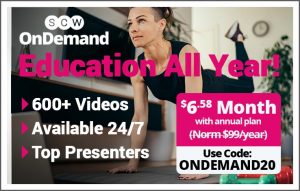
At this point in time, fitness professionals do not have the training to act as healthcare providers. They need to work with the healthcare providers. Reaching out to physicians and connecting with hospitals is an effective way to professionalize fitness. It is also a way to build respect in the medical community. If we look at occupational therapists and occupational therapist assistants, the cost to become one far exceeds the economic rewards, therefore exists a shortage of individuals pursuing this much-needed path. Many times, we find these occupational therapy professionals (and physical therapists) offering personal training on the side because they can earn much more, leading us back to capitalism in its healthiest form – those that are good, get paid, and those that are great, can retire one day!
Unfortunately, there still remains a huge population of individuals who are underserved and can’t afford personal training and, in some cases, even quality insurance.
Who knows if there is really any direct path to the medical community’s full acceptance and support of fitness, but I do know that we are getting closer. The general realization that wellness is important is key! According to CNN, this year’s top health-related Google searches reveal people are no longer focused on ‘COVID-19’ or ‘vaccines’. Instead, key word internet searches are focusing “on physical and mental recovery – how to get healthier and how to cope with issues like anxiety, depression….” and other emotional issues according to an article written by Madeline Holcombe of CNN.
If you ask any fitness professional their thoughts on the current state of the industry, the answers will be all over the map, but everyone will agree that we all need to work together as a team, show respect, support, and most of all compassion. It’s who we are and will always be. Wellness is our focus for 2023.
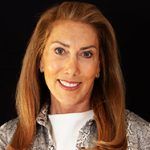 About the Author: Sara Kooperman, JD
About the Author: Sara Kooperman, JD
Sara Kooperman, JD, CEO of SCW Fitness Education, WATERinMOTION®, and S.E.A.T. Fitness sits on the Gold’s Gym Think Tank and the canfitpro Advisory Panel and was a founding board member for the Women in Fitness Association (WIFA). Recently nominated for the IDEA Fitness Leader of the Year Award, Kooperman won the 2022 Most Innovating Fitness Pro by Fitness Industry Technology Council. She is also an inductee into the National Fitness Hall of Fame, an Illinois State Businesswoman of the Year, and an esteemed panelist for IHRSA’s Talks & Takes Monthly Talk Show.

What a Pain in the Neck!
If you are one of the millions of people who suffer with neck pain, YOU ARE NOT ALONE!
- Do you spend hours hunched over your laptop?
- Are you constantly staring down at your phone?
- Is your stress level out of control?
- Do you lack self-care in the form of exercise and nutrition?
The time is now to gain the education needed about the neck, also known as the cervical spine, so that you can take the proper action to live a more pain-free and quality life.
The neck, or cervical spine, is part of a long flexible column, known as the spinal column or backbone, which extends through most of the body. The cervical spine (neck region) consists of seven bones (C1-C7 vertebrae), which are separated from one another by intervertebral discs.
Attached to the back of each vertebral body is an arch of bone that forms a continuous hollow longitudinal space, which runs the whole length of the back. This space, called the spinal canal, is the area through which the spinal cord and nerve bundles pass. The spinal cord is bathed in cerebrospinal fluid (CSF) and surrounded by three protective layers called the meninges (dura, arachnoid, and pia mater).
At each vertebral level, a pair of spinal nerves exit through small openings called foraminae (one to the left and one to the right). These nerves serve the muscles, skin and tissues of the body and thus provide sensation and movement to all parts of the body. The delicate spinal cord and nerves are further supported by strong muscles and ligaments that are attached to the vertebrae. (February 2023 Cervical Spine www.aans.org)
What causes pain in the neck?
Wear and tear of the cartilage and bones in neck due to:
- Age – elderly persons are more prone to develop spondylosis.
- Dehydrated or drying spinal discs, reducing the space between two neck bones.
- Herniated discs
- Injury to the neck
- Stiffer ligaments in the neck
- Overuse of spine
- Repetitive stress: holding the neck in an uncomfortable position for long durations.
Neck pain may be caused by poor posture, kyphosis (Rounding of the shoulders and neck), disc degeneration, arthritis, narrowing of the spinal canal, injuries such as whiplash or a blow to the head, and in rare cases, cancer, or meningitis.
Neck pain may be accompanied by other symptoms such as:
- Pain extending down the arm.
- Numbness and weakness in the upper extremities & hands
- Unsteady gait when walking
- Muscle spasms in the legs
- Loss of coordination in arms, hands, finger
- Loss of muscle tone in arms and/or hands
- Dropping items or loss of dexterity of hands
While age or family history is something that cannot be controlled, there are various steps you can take to reduce and avoid neck pain such as:
- Limit/avoid lifting heavy weights.
- Cut Down/Quit Smoking
- Maintain a healthy weight.
- Hydrate throughout the day
- Temporary cervical collar to support your head (neck muscles can rest/ heal)
- Ergonomic Chairs/Standing Desks
- Correct Posture
- Massage/Stretching of the back, chest, shoulders and neck.
- Change positions often (set timers)
- Exercise: Increase circulation through walking, yoga, etc.
- Meditation/Mindfulness practices to decrease stress.
In addition, infusing stretches and movements to improve mobility can be done anytime and anywhere. Whether you are seated or standing at your desk, at the office, or stopped at a traffic light, try to add these into your daily routine.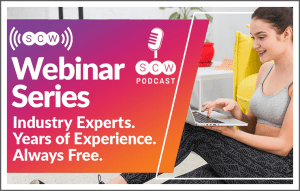
- Neck rotations
- Sideways head tilt
- Neck retraction
- Neck extension and flexion
- Shoulder rolls
Finally, incorporating exercises that target the stabilizing muscles surrounding the neck is a great way to improve and maintain proper posture and neck alignment throughout the day. To cut down on neck pain, strengthening the muscles in and around the neck is a great way to prevent future neck issues.
Infusing these exercises 2-3x per/week is a great place to start. Remember to start with light weights and low reps until you develop the strength to add more weight while still maintaining proper form and alignment.
- Dumbbell shrug
- One-arm row
- Upright row
- Reverse fly
- Lat raise
 About the Author: Christine Conti, MEd
About the Author: Christine Conti, MEd
Christine is an international fitness educator and author of the Arthritis, Chronic Disease, Orthopedic, Fall Prevention and Eating Disorder Fitness Specialist Courses. She is the best-selling author of SPLIT-SECOND COURAGE, Motivational Speaker, Podcaster, and Conti Fitness & Wellness, CEO. Christine is a 3x IRONMAN, and 50+ marathon finisher who serves as an advocate for those suffering with chronic diseases.

What To Do & Not Do When Securing a New Fitness Position
What’s your fitness story? How did you get started in the industry? Everyone’s journey is different, but mine started more than 27 years ago moving from front-row class participant to teaching group ex. My fitness story wasn’t quite that quick, but the reason I was asked to teach was due to an aquatic instructor not showing up and the director asked me to step in. Since then, I have taught land and aqua fitness in various settings, facilities, and positions. In addition, I worked full-time in leadership roles as a supervisor and director overseeing employees and contractors, hired supervisors and team leaders. I have experience with onboarding and participated in the interview process. Having a master’s in industrial organizational psychology, I understand the procedures and requirements to land the perfect job.
Throughout my experiences, I have learned what to do and not to do when striving to secure a job in the fitness or wellness industry. With both success and failures, learning from my mistakes, here’s a list of helpful tips for multiple types of positions when applying for your next role.
Ask questions, educate yourself on the hiring process, and treat it seriously, even if you are an in-house candidate.
Understanding the hiring process at the organization or company you want to work for, could make or break winning the position. If unsure, ask questions. It’s better to understand more than not be able to provide an answer. Interviews can vary, some companies require group interviews or auditions and others are more traditional with a one-on-one. In all cases, be clear on what to expect and be prepared before your meeting.
Furthermore, never assume the job is a given if you are an in-house candidate. I have witnessed in-house candidates lose jobs due to poor preparation or acting too casually during the interview. Prepare, practice, and be on your “A-game.”
Dress appropriately for the role you want. 
Always know if your first meeting will be an interview, audition, or both, and dress accordingly. If you are going in for an audition, look the part, be confident, and dress appropriately. There is only one First Impression and it can happen within seconds. If you are going into an interview, dress professionally; wearing professional business clothes will show that you value the opportunity and are serious about the job, especially if you are interviewing for a leadership role, such as a director or manager.
If you presently work at a company and are interviewing to advance into a leadership role, do not wear your company uniform, which I have seen happen; always wear formal business attire. Dressing appropriately shows you understand what a leadership role will entail and that you really want the job. Even if the job is in a casual setting, wear appropriate professional clothing, NOT a suit jacket and jeans, which, unfortunately, I have seen worn by interviewees at a gym.
Secretly shop the company to educate yourself.
When possible, secret shop the company in-person. That means tour the facility as a prospective member, take a class, and learn about the facility and organization before your first interview or audition. Read the organization’s website, materials, and policies. Understanding the company, its values, and customer service culture will help you in the interview process.
If you opt to take a fitness class or training session led by the hiring manager, you can say hello, but do not assume you can meet with them one-on-one at that time if you have yet to schedule an appointment. I have experienced a situation where a prospective employee visited the facility and thought she could briefly meet the manager who was very busy. Not only was this frustrating to the manager, the prospect lost a job as a result. Many managers and directors have limited free time and assuming you can meet them without an appointment may leave a wrong first impression.
Be an early bird.
Show up early for any first meeting or interview. This shows your work habits and a sense of responsibility. Many locations or hiring managers will only meet you if you arrive early or on time. Allow for ample arrival time, even being one minute late can be a lost opportunity. I had an instructor I wanted to hire show up two minutes late to a group interview, the door was shut, and she was turned away, per company policy.
Be prepared to move or lead a demonstration at any time.
If you are only coming in for an interview, bring your fitness clothes and be prepared to move if asked to show something on the spot. A seasoned or prepared instructor or leader is ready to teach at any time. While I was interviewing for a management role at a corporate gym, an instructor did not show up for a class. I offered to teach and did; they offered me a job shortly after.
Have your personal sales pitch ready.
For any interview, always be prepared to have your “elevator pitch” ready when they ask you, “Tell me about yourself.” This 30 second explanation quickly describes yourself touching on past work experiences relevant to your desired role. Aim to be concise and clear. The average person’s listening attention span is 8.25 seconds. Avoid droning on and sharing personal details that do not pertain to the question. Write and practice your “pitch” out loud. It’s almost guaranteed that you will be asked this in almost any job you interview for, and practice makes perfect.
Avoid saying negative things about another company.
As tempting as it may be, avoid saying negative things about another fitness company or a past supervisor in your interview or audition. The fitness industry can be smaller than you think, and the longer you are in it, the more you may cross paths with people that know each other. Be careful what you say and avoid sharing negative experiences about a different company or competitor; without realizing it, you may put your foot in your mouth (Yes, I have done this in the past and immediately knew I made a mistake and lost the job). Focus on the positive; what you valued in previous employment, and what you would like in your new position.
Secure training in the role you want or indicate that you are or will get the required training immediately.
Many times, companies will up-skill you if you have the right customer service skills, motivation, and desire to learn. If you do not hold a required personal training or group fitness certification, be open minded and prepared to take a different role if offered. Be sure to identify your niche and be honest, it is also important to secure a primary group fitness certification, such as the SCW Group Exercise certification. I worked at companies that allowed instructors to only have a license in a format versus requiring a group fitness certification and license. There is a big difference between a certification and a license. In my experience, instructors with general group fitness instructor certifications were better trained and safer, plus they knew how to read a room and adjust as needed to meet participants’ needs. The skill sets you gain in a primary certificate will benefit you long-term and open more doors.
If you desire to advance into a leadership role, research the certifications or education that supervisors, directors, managers, or leaders have acquired. Take management courses, consider a personal training certification, or, consider higher education with a fitness or wellness degree. Personally, in order to advance and transition to a new role, I returned to graduate school in my late 40s. While it was challenging, in the end, it opened doors for me and led me to the job I wanted.
Always have questions to ask.
One way to impress the interviewer, is to prepare and ask at the end of the interview at least two questions. It will show you are serious about the job. In my early 20s, I lost a full-time job I was offered on the spot because I had no questions at the end of my interview. The director interviewing me perceived my lack of questions as a lack of knowledge and interest although I can assure you that wasn’t the case.
My favorite question to ask is:
- What is the average length of tenure of employees at your company?
This question will give you a picture of employee satisfaction; do employees stay long term and is it a positive place to work?
Edit and double-check anything you provide in writing including thank you notes.
Always ensure that any written materials you provide, including a resume or cover letter, are clean, with proper formatting, spelling, and grammar. Try to have someone check your materials, otherwise, use a program like Grammarly. If you use AI programs to write your letters, do not assume they are 100% correct; read and edit them as needed.
It is always a good idea to send a thank you email or letter to the people who interviewed you but be sure to grammar check that message as well. A single spelling error can cost a job.
Pay, always the big question! 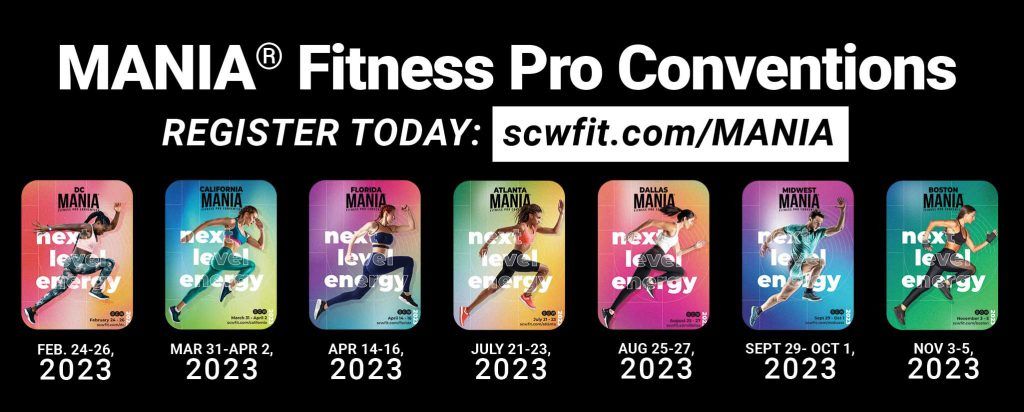
If the interviewer asks you what salary you would like, you can ask about the position’s pay range. Many companies have salary ranges for a job. Factors such as years of service, training, and education often impact your compensation. You should feel comfortable asking for a salary equal to your experience. While this is not the case everywhere, some companies’ salaries are public and located online, giving you an idea of what to expect.
Understand the value of benefits and ask about them.
Good benefits usually reflect the company’s support for employee well-being and long-term satisfaction. Benefits are indirect cash or non-cash compensation given to employees on top of their salary.
Some companies offer part-time benefits, including sick leave, education or professional development opportunities, free CPR/AED, complementary gym memberships, and more. Benefits add value to your job. Sometimes a company may pay less than a competitor, but if they offer benefits such as access to Club Connect (which will give you free CECS) the lower paying job may be worth more in the long run.
If you aim to secure a full-time position, the benefits offered to you add personal and financial value to your job. As you evaluate your offered salary, add the economic value of the benefits offered. If a company’s benefits are not shared during an interview or sent to you, add that to your list of questions to ask at the end. Also, educate yourself and read up on the companies’ retirement benefits and policies, as well as paid time off, sick leave, and termination policies. Understanding this will help in the future if you resign. How a company treats “exiting” employees reflects the company culture and every site manages this differently. For example, I have worked in settings that terminate at will, where you can resign without required notification and PTO was not paid out, and in companies that require two to four weeks’ notice (where you could only get PTO paid out if you gave the necessary time and notice).
Understand the details of a contractor versus employee before taking the job.
If you are working as a contractor, ask and understand the organizations’ subbing procedures. (What happens if you cannot teach or need a sub? How does the company provide payment? What is the pay timeline? Some contractors are not paid direct deposit nor bi-weekly.) Also, remember when you are a contractor, you will most likely owe taxes at the end of the year, so prepare for that payment and seek the advice of an accountant.
Furthermore, you need to secure personal liability insurance if you are working as a contractor. Many companies will ask for a copy of your policy, but not all companies do or tell you about it. Just because they do not mention it, it does not mean you do not need it. Anytime you are contracting in the fitness industry, secure liability insurance.
Finally, and most importantly, be kind to yourself.
For every job, you do not get or accept, if offered, there will be other opportunities coming your way. Being interviewed and auditioning can be challenging. Rely on friends, coworkers, or mentors to help you. Like everything else, you will improve in interviewing and auditioning with practice. Be kind to yourself, take your time, and hopefully, you will land where you are meant to be and ultimately love your job.
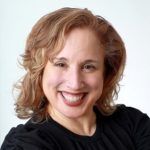 About the Author: Megan Cooperman
About the Author: Megan Cooperman
Megan values helping employees on their journey in the fitness and wellness industry and finding their passion personally and professionally. She feels fortunate to have worked as an Instructor, Group Fitness Manager, Wellness Director, Employee Wellness Specialist, Master Trainer, and more. Megan has multiple fitness certifications and master’s degrees in industrial organizational psychology and counseling.

The Anti-Aging Effect of Athletic Training for Women
by Trish Dacosta
Courtesy of www.barbellpilates.com
We ladies spend a fortune on beauty products, cosmetics, and medical procedures in the name of anti-aging. It’s a booming business – $551 billion globally in 2021 to be exact, with no signs of slowing down.
Fine lines and multiple visits to the hair salon are expensive and annoying, and women are conditioned to spend, spend, spend in the name of youthfulness. But if I had to bet on the best anti-aging medicine that far too many women ignore it has got to be strength training. Specifically, getting strong and athletic.
Maybe you want to start playing in a rec league on weekends to get yourself outside the house and meet new people. Or perhaps you’ve started playing golf and want to bring your kids along with you for a fun family bonding experience. There are a million reasons why women (and men) would benefit from building or maintaining their athleticism as they age, and it truly is the best anti-aging “secret” of all.
Characteristics of an Athlete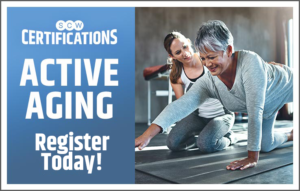
A lot of the women I’ve worked with do not consider themselves athletes in the traditional sense. They [wrongfully] assume that because they have desk jobs or never played in a team sport, that building a strong, athletic and durable body is not a worthwhile goal for them. With time, they realize the faulty logic in that and start embracing training for strength and athleticism.
I’d argue that remaining ageless requires a dose of athleticism. It’s the first thing people lose as they age in addition to muscle mass and bone density.
Contrary to popular belief, athleticism is not defined merely by one’s ability to play sports. It can be part of it, but certainly is not a requirement. The Webster Dictionary definition agrees with me too:
Athleticism: the physical qualities that are characteristic of athletes, such as strength, fitness, and agility.
When someone asks you, “Are you an athlete?”, forget about your age or the last time you played a sport, if ever. Start thinking about the characteristics of an athlete. Do you possess strength, fitness, and agility? Do you embody the training and mindset of an athlete? Is there an area where you are dialed in more than others?
The answers to these questions are the woman’s guide to anti-aging training.
I recently started playing sand volleyball here in Nashville as a way to get me outside of the day-to-day routine, meet people, and be active outside of the gym. Having no prior experience with this sport, I knew the learning curve would be high skills-wise, but I possess a decent baseline of strength and fitness to dive right in.
Instead of starting from scratch like many people do (i.e. starting to workout for the first time) or just jumping into games mindlessly, I began my preparation with:
- Developing power, jumping and single-leg landing mechanics
- Building more unilateral strength
- Integrating more shoulder and ankle performance care work
- Intentional aerobic and anaerobic conditioning
The ability to start a new sport in your late thirties or later is the definition of ageless in my book. Most people at this age or older bemoan the aches and pains of getting older and warn other young people to “just wait until you get older! Everything starts to break down!”
I’m against this negative self-talk because 1) it does nothing to propel you forward from a fitness or athletic standpoint and 2) it becomes a crutch to avoid doing something altogether.
Strength training and conditioning are of the utmost importance for performance and injury prevention regardless of your athletic ability or age. The older you get, the more intentional the work becomes and it starts with power development – a key component of most general fitness programs.
Developing power, jumping and single-leg landing mechanics
It’s impossible for me to enjoy a new hobby like volleyball without obsessing over the details on how to improve (Is there a support group for us?). I am 37 years young with a background in long-distance running and strength sports like powerlifting and Olympic weightlifting. I know what I’m good at (lifting heavy objects and tackling distance) and more importantly, what I am not so good at (speed, high jumps, reactive strength).
Perhaps you want to get your own dose of anti-aging medicine by jumping into a new sport or hobby that requires athleticism. You may not care about being elite, but you strive for excellence and wish to enjoy yourself in the process without getting hurt.
Where do you start?
Align your training with the goal. Train for strength, speed, and durability – the anti-aging trifecta. If I want to keep playing and improve over time, developing power, jumping and landing mechanics and single-leg strength is paramount.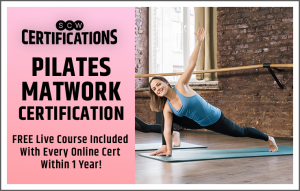
Plyometrics that make sense
Far too many people approach plyometrics as a conditioning tool, or worse, to feel like they’ve busted their ass in a workout. If your goal is to feel like you did a lot of work, then keep going. However, both approaches will be detrimental to developing those athletic characteristics.
When power development is the goal, the selected exercise(s) will occur at the start of your workout when you’re fresh and before the strength work begins. Low rep ranges (3-6), adequate rest, and focus. There are a variety of plyometrics to utilize. Here are a few in my current rotation.
Box Jumps
The concentric box jump is one of my favorite box jump drills. While most box jumps emphasize the eccentric loading position, the concentric phase of this involves extension of the hips, knees, and ankles while removing momentum to build lower body power from the ground up. I also find these enjoyable and that’s enough reason to keep them.
The most common plyometric/box jump variation, of course, is your standard standing box jump used to increase the vertical jump and reinforce good landing mechanics. This is often where I start a client once they’ve mastered a few basic movement patterns and baseline of strength.
Depth and Drop Jumps
Depth and drop jumps are helpful for building explosiveness and should be used based on what the person needs. Let’s review the components of each one.
Depth Jump for maximal jump height
- Start from a high platform or box (height will vary depending on the person). The higher the box, the greater the impact and force absorption required on the ground.
- The angle of the drop is around 20-30 degrees
- Land in a greater degree of knee flexion resulting in longer contact time with the ground
- This is a maximal effort exercise. Keep the rep ranges low (1-3) and plenty of rest in between sets
Here’s a great example from Wil Fleming.
Drop Jumps for quick rebound
- The box height is small here, from 6-24”
- Land in a shallow degree of knee flexion that allows for a quick rebound time and staying tall throughout
- Focus on muscular and tendon stiffness
- This is submaximal effort and power output so you can string a few more reps together as fatigue is lower
Unilateral Strength
As a former powerlifter, the Big Three (barbell squat, bench press, and deadlift) have been a big part of my strength training programs for a long time. They are bilateral movements with tons of carryover outside the gym and I’m grateful for how it’s set me up to start playing a new sport whenever I want. However, training like a powerlifter hinders athleticism to a degree. You miss out on the speed, quickness, and conditioning characteristics because frankly, that’s not needed in the sport of powerlifting at all.
Training unilaterally for sport is a key factor in joint integrity and muscular balance no matter who you are. People complain about everything hurting as they age because they lack unilateral power and strength! I’m speaking generally here but looking around at any commercial gym confirms my theory – we simply do not train enough unilateral strength for athleticism.
In a sport like volleyball (or softball, basketball – pick one!) it’s natural to favor one side over the other whether it’s hitting, jumping or landing. That’s a lot of wear and tear on one side. For working women hunching over a desk for hours on end or carrying their kid on one side over another, you’ve doubled the amount of wear and tear.
More unilateral strength in the form of split squats, lunges, landmine presses, and rows in various planes of motion will build up the missing pieces in your athleticism. Instead of obsessing about getting a “tighter, leaner core” how about training trunk stability side to side? Or perhaps instead of a barbell bench press why not a single arm floor press and standing landmine press with explosiveness?
Look around at some of the female athletes you most admire. They look good and perform like they’re ageless for a reason. They have all components of athleticism and train for performance; the aesthetics come as a result of that work.
To truly defy time and age, start by building your athleticism.
Please find the original article HERE

6 Tips to Turn Any Fitness Instructor Into a Networking Pro
by Michele Park
There’s a reason why a group of animals is more effective in a hunt than a lone wolf.
“Better Together” as they say. Small business owners should always be striving to grow their pack…err…network.
Networking provides an opportunity to grow, share, and experience in a way that isn’t possible if you try to do everything on your own. Here’s a few ways to “make friends & influence people” to enhance your involvement in the fitness industry.
Volunteering and Community Events
Wouldn’t it feel great to help others while helping yourself? Volunteering is a rewarding experience that helps you…
✓ Build work experience 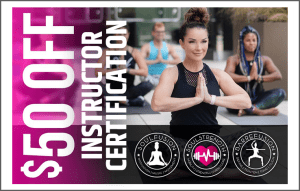
✓ Gain brand awareness
✓ Connect with a variety of people
✓ Showcase what you have to offer
✓ Fuel your passion
Not to mention you are giving back to those who need it the most. It helps shape you into a more rounded and humbler individual — good traits for any business owner to have.
Community Events are other great options for getting out there.
✓ Mingle and get to know new people
✓ Connect with people who have similar interests
✓ Get more involved with the city or town you live in
✓ Provide information about what you do
✓ Expand your inspiration zone
These activities are good ice-breakers — particularly if you are on the shyer side. It helps you get out of your shell and share facts about your business to the world.
Social Media and Word of Mouth
Everyone knows that social media can be a powerful tool — but it’s also a great (digital) way to network.
Social Networking…
✓ Brings people together from all over
✓ Keeps people connected and informed
✓ Keeps things timely and uncomplicated
✓ Provides insights and statistics
✓ Builds customer loyalty
There’s really no other comparison to what social networking can do for people and their businesses.
But sometimes people lean toward a more human experience. Good old-fashioned word of mouth is still very relevant today.
Did you know that…
I know about this…
I got connected with…
This business offers…
This brand has the best…
Simply getting people to talk about your business can help expand your network bubble.
Partnerships and Promotions
“I lean on you/you lean on me” can be a nice way to give and get support — and expand your inner circle.
✓ Knowledge and ideas
✓ Opportunities
✓ Advice and tips
✓ Connections
✓ Sales and revenue
✓ Resources
And with a good partnership comes cross-promotions. Help spread the word of your partnership and promote what they have to offer — and they can do the same. A win-win for expansion!
Get Mingling
It’s really important to establish, build, nurture, and maintain relationships that help your business succeed — not to mention help your sanity. It’s good to have people you can go to that understand the industry you’re in.
Take advantage of opportunities that can help your network grow. Pop online, go to events, and host gatherings! It’s all worth it for you AND your business.
The connections you make today will lead to a better, brighter tomorrow.
Learn more about networking and other ways to enhance your fitness career by joining me at SCW California MANIA®, March 31 – April 2. I’ll be presenting several sessions, both workshops and lectures, such as “SOULstrength Cardio Kickboxing Intervals,” “SOULfusion Experience,” and “The Beauty of Building a Brand” throughout the 3-day convention. Registration starts at only $119. If you can’t make it, visit my website at www.thechoreograpyclub.com to learn more about SOULfusion classes and instructor certification.
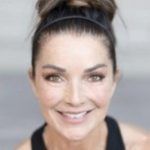 About the Author: Michele Park
About the Author: Michele Park
Michele has been a mentor & educator in the fitness industry for over 30 years. She has owned her own personal training company, worked with large fitness corporations on program design/development and trained thousands of fitness professionals. She is the owner of the Choreography Club, a one stop instructor shop, and the creator of 4 fitness formats: SOULfusion, SOULstrength, BARREfusion and the newest addition to the SOUL family SOULkb. Her formats are taught all of the country. She has presented throughout the US and internationally.
On a personal level, Michele lives in Southern California with her husband, two adult daughters and two goldendoodles (Jax and Delilah) She loves to create and serve but is also a huge fan of sitting on the couch smothered by goldendoodleness, watching a great documentary with a glass of champagne. It’s called balance. www.theSOULSQUAD.com

Transform Lives Through the Magic of Brazil
by Mariana & Andre Santos
If there’s one thing that the pandemic taught us, it’s that fitness and wellness professionals are more essential than anyone ever thought or gave them credit for. It is now more evident than ever that mental and physical health suffers greatly when people have decreased access to physical activity and the right professionals to help them implement healthier habits.
Despite the amazing work that fitness professionals do to change their clients’ lives, the common complaint among professionals in the industry has been that they still feel underappreciated, burnt out, and undercompensated. Brazily™ Fitness believes this needs to change.
They have made it their mission to not only provide instructors with dynamic and life changing dance and fitness programs to make them stand out in the market, but also provide them access to top professionals, tools, and strategies to help them build a lucrative, sustainable business doing what they love. 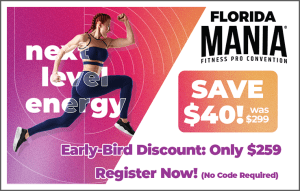
Co-founder and CEO of Brazily™ Fitness, Mariana Santos, says, “Fitness and wellness professionals spend so much time looking after their clients’ wellbeing, it’s only fair that they feel taken care of too. By working together as a team, we can create real change in the industry.”
You may ask what makes Brazily™ Fitness different from other fitness programs. The answer is simple, it’s all about “Viva a Vibe!” By being a part of the Brazily™ world, participants will truly “live the Brazilian vibe,” in and out of the gym.
Let’s break down Brazily™ Fitness. Our Guiding Principles lead us to share love and joy wherever we go, prioritize self-care & self-love, believe that the journey is the destination, and know that unity is our strength. Our Mission is to help Group Fitness Instructors advance their careers by building stronger connections so they can help more people every day. Finally, our Vision is for people all over the world to follow the Brazilian approach to fitness and lifestyle so they can build their confidence in and out of the gym and live a life with more health, fun, love, and joy.
The Brazily™ Fitness movement is all about connecting the most passionate fitness instructors in the world to help transform people’s lives, from the inside out, using the magic of Brazilian music, dance, fitness, and lifestyle. It’s also about turning fitness instructors into wellness professionals so they can help people live healthier, more joyful lives by working with them outside of their classes, which also generates new income streams.
Brazily™ Dance, the first Brazily™ Fitness Instructor certification program, has just launched. It uses the hottest Brazilian music and dance moves for a dance fitness experience like no other that focuses on boosting confidence levels, getting in touch with your sensuality, letting loose, and having fun. Each class participants are reminded of their potential so they can feel unstoppable in all areas of their lives!
The Brazily™ future is bright. Be on the lookout for Brazily™ Sculpt, Brazily™ Let’s Goal, and Brazily™ DanceCamp. Each of these unique programs promises to get rid of the “no pain, no gain” mentality and focus on taking care of YOU first, by using fitness and dance as tools to live a life you love, making sure you have FUN along the way.
If you’re interested in joining the Brazily™ Fitness movement, check out their website. Find out how you can become a Brazily™ Dance instructor and even be considered as a Master Trainer, Presenter, Choreographer and more as Brazily™ Fitness expands across the globe!
More Love. More Joy. More Fun. More Confidence. More Sexy. More Life!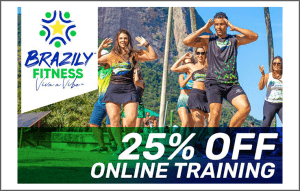
This is our movement. This is the world we are creating. Are you in? www.brazilyfitness.com
Experience Brazily™ Fitness firsthand. Register for Florida MANIA®, April 14-16, at the Caribe Royale Orlando. This 3-day hands-on fitness convention offers over 120 workshops and lectures filled with the latest health and wellness education, including Active Aging, Strength, Mind/Body, Dance, Cycle, Aqua, Nutrition, Ex. Science, and Business. Join Brazily™ Fitness and save 25% off their online Instructor Training. All this and so much more, with registration starting at only $119 (reg. $179.) Don’t miss out and Viva a Vibe™!
 About the Author, Mariana Santos
About the Author, Mariana Santos
Mariana Santos was born and raised in Canada. She moved to Brazil as a teenager where she was introduced to the Brazilian approach to dance, fitness, and lifestyle. This experience propelled her into her career as a personal trainer and group fitness instructor. She returned to Brazil at 25 years old, where she fell in love with Brazilian culture even more and also met her now husband, Andre. Together, they created Brazily™ Fitness which aims to share the unique Brazilian vibe with the rest of the world through fun and dynamic Brazilian inspired fitness programs.
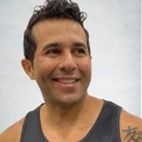 About the Author, Andre Santos
About the Author, Andre Santos
Andre Santos was born and raised in Belem, Para, Brazil. He spent several years dancing in bands touring across Brazil and teaching Brazilian dance fitness classes. He moved to Rio de Janeiro in 2014, where he met his now wife, Mariana. In 2018, he moved to Canada to start working on Brazily™ Fitness, which aims to transform lives using the magic of Brazilian music, dance, fitness, and lifestyle.

Primal Fitness: Ancient Movement for Modern Times
Primal fitness means moving as our hunter-gatherer ancestors once did. They crawled, climbed, jumped, walked, and squatted their way through life…and we can too!
Moving as we’ve evolved to do certainly isn’t new, but it is making news. Indeed, a recent Pinterest Predicts trends report named primal movement one of the hottest fitness trends of 2023.
What’s behind the comeback? Put simply, it makes biological and logistical sense, it’s accessible and adaptable to all ages and ability levels, and it works.
Obviously, this isn’t news to ancestral health and functional fitness communities. But so great that others are catching on! Here’s why:
- It takes movement from compartmentalized (relegated to a 30-minute workout, for instance) to integrated. This is a fancy way of saying: Move your body in ancestrally aligned ways throughout the day, and you’re set.
- It’s extra doable and demystifies what helps us stay vital and well. Primal movement is accessible and adaptable to all different body types, ages, and physical abilities. It’s also low cost or free. If there’s an inclusive movement practice out there, this is it. After all, it’s what we’ve evolved to do.
- It counters modern-day obsession with screens, gadgets, and smartphones. It also mitigates widespread side effects of technology use, including poor posture, chronic pain, and repetitive use injuries.
- It encourages us to check in with how we feel and how we want to move. Our body truly is our ally and best barometer. By remembering or learning how to move naturally, we touch into what we want and need more generally. We also remember that movement isn’t a punishment or chore. It’s a gift that can be fun and feel fantastic!
- If you’re versed in ancestral ways and wisdom, you’re already ahead on the hottest fitness trend. This means more people will be seeking your expertise when it comes to fitness. They’ll also be more open to how that complements other primal, ancestor-forward foundations, including diet and lifestyle.
Hype aside, this is a trend that supports whole-body health—physical and mental. 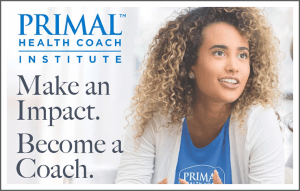
Primal movements are easy to perform and require minimal (if any) equipment. Here’s a list of 11 basic ones that can be adapted to varying ability levels and integrated into daily life:
- Walking: can be incorporated into daily activities
- Jumping: great for increasing workout intensity
- Running: can be performed as a sprint or jog (ideally both, but a “sprint” will look different for everyone and just means full-out effort)
- Squatting: builds lower-body strength and can be performed as a bodyweight exercise or with extra loading
- Lunges: can be performed as a static movement or as a walking lunge
- Plank position: develops core and shoulder strength
- Hanging: fantastic for improving grip strength and for spinal decompression
- Pull movements: can be performed as full pull-ups or scaled with bands
- Push movements: can be performed as full push-ups or scaled—either way, works shoulders, chest, and core muscles
- Bending movements: hinging exercises such as deadlifts that mimic the action of picking an object off the ground
- Sitting on the floor: works wonders for hip mobility!
Put simply, primal fitness is an accessible, efficient, effective way to stay active and get healthier—no special equipment required. All you need is your body (and perhaps some skillful, knowledgeable coaching) to bring ancestral movement into the modern day.
Click here to learn more about becoming a Certified Primal Fitness Coach or give us a call at 844-307-7662.
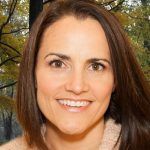 About the Author, Laura Rupsis
About the Author, Laura Rupsis
Laura Rupsis brings years of leadership experience to the Primal Health Coach Institute team as Director of Admissions. She is the co-owner of Absolution CrossFit and Founder of CoachLaura.FIt, coaching busy people through lasting habit change and into healthier, happier lives. She’s also the co-host of Health Coach Radio and a National Board Certified Health and Wellness Coach.

How to Fuel Your Body Before & After a Workout
“You are what you eat” has always applied to staying healthy, but does that also apply to exercise performance? Fueling your body for your workouts is important to ensure that you are able to perform at your very best. It also helps with recovery from the toll the body takes during the workout.
Let’s take a look at some simple guidelines when it comes to planning your snacks and meals that bookend your workout.
Pre-workout fueling is dependent on many factors – time of day, intensity, duration, type of workout and food preferences are all aspects to consider. Prior to exercising, your body requires fuel for energy. The first and preferred source is carbohydrates. It is a good idea to consume this nutrient one to two hours prior to your workout. Choose carbohydrates that are easy to digest and “light” on the gastrointestinal system.
Keep in mind, pre-workout food should be lower in fat and try to consume a small amount of protein with the carbs. Proper hydration is key before starting your workout. About two to three cups of water a couple of hours before you start is a good goal.
Some examples of pre-workout snacks:
- Fruit paired with a small amount of nut butter, low fat cheese stick or chopped chicken breast • Rice or Quinoa paired with chicken or turkey
- Greek Yogurt paired with berries (or any fruit of choice)
- Protein Shake with 1/2 scoop of protein powder and fruit
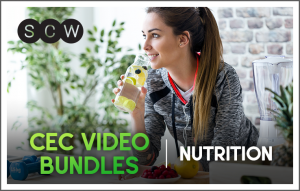
Eating a full meal two to three hours prior to your workout, might seem like a good idea, but think again. You’ll probably notice that your energy level is low, you may feel lightheaded, or your strength could seem comparatively weak. If you consume a larger amount, consider one of the small pre-workout snacks above to help compensate.
After the workout, your main goal with nutrition is to replace the used glycogen, provide the damaged muscles with protein, and rehydrate and balance your electrolytes. One of the fastest and easiest ways to do this is with a protein shake made with coconut water, a full scoop of protein powder (to provide about 25g-30g of protein,) and fruit.
Liquid nourishment after a workout is faster digesting and more readily available to do the work needed within the body. However, you can choose to eat food if that is your preference. Keep your post-workout snack as low-fat as possible. Choose faster burning carbohydrates – like fruit, oatmeal, rice cakes, even candy like gummy bears, and it pair with a protein like egg whites, chicken, or turkey.
Once again, don’t forget to replenish with plenty of water. If you have sweated a great amount, you’ll want to make sure to replace the electrolytes you’ve lost through unsweetened coconut water or a little bit of a sports drink.
One of my favorite post workout snacks is Protein Ice Cream. Here’s my special recipe.
Amber’s “Dole Whip” Protein Ice Cream
- 1 scoop Vanilla Ascent Whey Protein Powder (or any type of vanilla protein powder)
- 1 cup frozen Pineapple Chunks
- Splash of Pineapple juice
- Splash of Unsweetened Vanilla Almond Milk
- 1 tsp. Frontier Co-op Vanilla Flavoring
- Ice (adjust to make mixture as thick as you like)
Blend all ingredients together in a high-powered blender. You can also top with a few Lily’s chocolate chips if you want some chocolate with your pineapple.
Don’t let your hard work in the gym go to waste! Proper fueling before and after your workout will help you to get better results. By anchoring these habits to your workout, you are more likely to do them. And when you do this, you are going to reach your goals faster and create habits that become second nature.
 About the Author, Amber Toole
About the Author, Amber Toole
Amber is an ACE Certified Personal Trainer with a Bachelor of Science degree in Physical Education and Health from Georgia Southern University. She has 30 years of experience in the Fitness Industry and loves to share her expertise with other Fitness Pros. It is her life’s mission to spread the truth about fitness and nutrition through education. She is the owner of The Training Toole – a Fitness and Nutrition Studio in Ocala, Florida, an SCW Educator and Fit Pro Mentor.

2023 Top Health, Wellness and Fitness Influencers
by Susan Yem
Courtesy of www.Better.Net
When it comes to making New Year’s resolutions, many of us renew our commitment to improving our health. In fact, five of the eight most popular resolutions of 2022 focused on fitness. As you begin your 2023 journey, get inspired by these 10 top health and wellness trendsetters to reach your goals this year.
Emily Sisson, Distance Runner
Flagstaff, Arizona
“Not every day is perfect; not every workout is great,” says distance runner Emily Sisson, who finished second in the 2022 Chicago Marathon with the NACAC record breaking time of 2:18:29. “There are some days when I’m feeling better than others, but I’m highly motivated. I like my job.”
Sisson started running in middle school when a friend on her soccer team asked her to try track to build their fitness. She turned pro in college and decided to chase the goal of becoming an Olympian. “I saw my dream fulfilled with the help of a lot of other people.”
Sisson finished as the top American — in 10th place — in the women’s 10,000-meter race at the 2021 Tokyo Olympics after breaking records at the Olympics trials. She changes up her motivation each time she competes. “Every race brings out something different in me,” she explains. “I may be trying to run a record or my personal best time or I may not care about time and only be focused on my competition.”
Sisson usually trains with her husband, Shane Quinn, a mental health counselor, who ran for a few years after college. “Having him there helps me run faster,” she says. “He helps me keep my pace.”
When she’s running alone, Sisson says it’s her me-time. “Running is a great outlet. It’s really fun and there are so many positive benefits to this sport.” She continues to challenge herself as she enters more races. “What keeps it interesting for me is switching up the types of races I run.”
Her new goals include more marathons and competing in the 2024 Summer Olympics in Paris, France. “I’d like to keep running through at least the next decade. I don’t know if I’ll accomplish all my goals, but I’ll keep working and keep trying and hopefully will get some of them.”
Adrienne Smith, Endurance Athlete, Rower
Santa Barbara, California
It wasn’t the years of playing sports in school in suburban Chicago that propelled Adrienne Smith into becoming a world class athlete. It was her dread of sitting in traffic during her daily commute from Naperville to Downers Grove that inspired her to spend hours in the gym. “I hate wasting time sitting in a car going nowhere,” she says. “So, I would wake up super early and go to the gym next door to my office. That cut my commute from 45 to 20 minutes. Sometimes I’d stay after work and work out again to avoid the afternoon traffic.”
But working out wasn’t enough for Smith. She decided to set a goal for herself; “I loved working out, but if I’m doing all this biking, running and swimming, why don’t I do a race?”
Smith qualified to run the Boston and Chicago marathons and decided to use triathlon — an endurance sport that combines swimming, cycling and running — as cross training for these events.
Although she loved participating, Adrienne no longer competes; “It stopped being fun. It wasn’t as invigorating as when I first started.”
A year ago, Smith’s husband, Jason, the strength and endurance coach for the Lat 35 women’s rowing team suggested a new challenge for the 42-year-old mother of a five-year old daughter: to join three female rowers and cross the Pacific Ocean. Never having rowed before, Smith took her first strokes on water in November 2021 and set off with the team the following June. They rowed from San Francisco to Hawai’i, 2400 nautical miles, in the world record time of 34 days, 14 hours and 11 minutes.
Smith says, “My teammates, all collegiate rowers, went right back to it, but this was a one-time deal for me.”
Smith who owns and operates the Power of Your Om yoga studio in Santa Barbara has set a new goal of using her experiences in sports to motivate others through storytelling and public speaking. “Fitness can be life-giving. When we move, we feel better. That impacts our lives today and into the future.”
Sara Kooperman , CEO of SCW Fitness Education, WATERinMOTION® and S.E.A.T. Fitness
Wilmette, Illinois & Colorado
Sara Kooperman started dancing as a three-year-old. She never wanted to stop, but because of an issue with her foot that required surgery, she decided that rather than go pro she would attend college and eventually law school. “I loved dancing,” Kooperman recalls. “The only time I felt good about myself was when I was dancing.” Once she recovered from the foot surgery, Kooperman did start dancing again. Although given the opportunity to join a touring company, she chose to stay at Macalester College where she was studying political philosophy and literature, and was teaching dance in her spare time. She says, “What started as a love of dance grew into a love of teaching. I realized I could teach anybody how to dance. It’s the movement I love, and anybody can learn to move.” 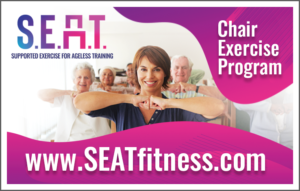
Kooperman graduated from Washington University Law School and passed the bar, but instead of practicing law, she opened a fitness business. Now 63, Kooperman is recognized as a leader in the industry. She has launched seven successful MANIA® fitness-professional conventions & business summits, six streaming conferences and over 40 live and online certification programs. Kooperman has also produced more than 600 fitness instructor training videos and is the author of the soon-to-be-published book, Fit for Business. She is the 2022 winner of the Most Innovating Fitness Pro by Fitness Industry Technology Council. 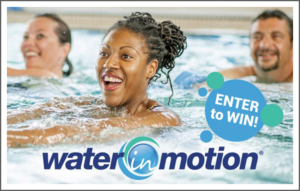
Recognizing the importance of movement for older adults, Kooperman is designing programs specifically for this age group. “Now more than ever we need to pay attention to the active agers. By 2030, adults 85 years plus will be the fastest growing segment of the population. We better learn how to take care of ourselves now or we’ll be saddling our kids with our medical expenses.”
Kooperman acknowledges the connection between strength, fitness and mental well-being. She works with the John W. Brick Foundation which emphasizes fitness as wellness. The Foundation is a sponsor at Kooperman’s conferences where she promotes their work. “Wellness means fitness and that leads to better mental health. It doesn’t have to involve high intensity interval training or heavy-duty weightlifting, just some type of integrated wellness program.”
Elena Delle Donne, WNBA player, Washington Mystics
Wilmington, Delaware
After sitting out two seasons to recover from a back injury, Elena Delle Donne came back to the WNBA with a vengeance leading the Washington Mystics into the first round of the 2022 WNBA playoff series. The two-time MVP, 2013’s second overall draft pick, and 2016 Olympic gold medalist was named one of the league’s 25 greatest and influential players of its 25-year history. She played for the Chicago Sky from 2013 until she was traded to the Mystics in 2017 and led that team to its first WNBA championship in 2019.
A big reason Delle Donne pushed for the trade was to be geographically closer to her family in Wilmington, Delaware. She did the same in college when she was awarded a basketball scholarship to the University of Connecticut, but decided to attend the University of Delaware. Delle Donne’s older sister Lizzie is blind, deaf and has cerebral palsy and autism. They use touch to communicate, something she could not do from a distance. In a video produced to introduce the Air Deldon — a shoe she designed in partnership with Nike — Delle Donne says, “My sister is the inspiration for all of my choices. She gives me strength. Everyone thinks I carry her, but she’s the one carrying me.”
The Air Deldon is Nike’s most inclusive basketball shoe and features a collapsible heel, an upper that opens wide for easy entry and a Velcro Ease strap to secure it.
Delle Donne is a global ambassador for the Special Olympics and the first national ambassador for the Lyme Research Alliance. She has been battling Lyme Disease since 2008. She established the Elena Delle Donne Charitable Foundation to raise funds and awareness of Lyme Disease research and special needs programs. Last March President Biden appointed Delle Donne to co-chair the President’s Council on Sports, Fitness and Nutrition along with world-renowned chef, restaurateur and founder of the World Central Kitchen, José Andrés.
Javier Gutierrez, Strength And Conditioning Coach at Fitness with Javier
Chicago, Illinois
When Javier Gutierrez was at his lowest point, he made the life-changing decision to get into shape and take care of himself. He recalls, “I was in my mid-twenties and going through a divorce. I was at my heaviest weight, 260 pounds. My mental health wasn’t great. My finances weren’t great. I realized I had to get my life together.”
He decided to first address his physical health, but as Gutierrez started to work out his mental health improved as well. “I became a lot more confident and that really helped me achieve a lot,” he says.
Gutierrez, a former athlete from Monterrey, Mexico moved to Chicago six and half years ago. He now co-owns a private gym in the West Loop where he trains a diverse group of clients that includes athletes and adults of all ages. “It’s a great range from retired grandmas to professional basketball players. They all have different goals, but everyone’s trying to get better.”
Gutierrez tailors the fitness routines to each individual, but always stresses the importance of being consistent. “The main thing I try to instill in every single person I work with is the fact that you have to stay disciplined. There will be days when you’re motivated and days when you’re not, but that shouldn’t change the fact that you must be consistent.”
Gutierrez appreciates how much better his life is today and that motivates him to support others by volunteering with nonprofit organizations that help families and children. He recently emceed the gala for the Break the Silence Foundation, an organization that helps victims of domestic violence. He also works with A Boy and His Dream. “We all have troubles. We all go through moments when we’re down on ourselves,” he says. “We’re trying to figure this thing called life out. It can be tricky, but once we start building good habits and doing them consistently, we’re going to see better things.”
Danya Rosen, Executive Director, Chicago Run
Chicago, Illinois
Danya Rosen was a very active child growing up in Los Angeles, but she admits to being a mediocre athlete. That doesn’t mean she didn’t enjoy playing sports. “I wasn’t good enough to make a lot of the teams,” she says. “But I loved what sports did for me — the joy and power of movement.”
As the Executive Director of Chicago Run, Rosen sees what sports, and more specifically movement, can do for the city’s youth. “Running and movement can be used as catalysts for transformative change and youth empowerment.”
Co-founded by Bryan Traubert and Penny Pritzker in 2007 to aid in the fight against childhood obesity, the nonprofit organization now partners with 50 schools and community-based organizations in 33 Chicago neighborhoods to engage youth from Pre-K through high school in inclusive running and physical activity programs. “Our programming bolsters resilience to stress and to trauma, develops social and emotional skills, and supports young folks developing a positive sense of self and identity,” Rosen explains.
Rosen, who enjoyed sprinting as a youth, is now training for the 2023 Bank of America Chicago Marathon — she ran her first half-marathon last June. “We always say, ‘Everyone is a runner.’ I don’t care if you’re walking a 20-minute mile or running a sub 5- minute mile, it’s about how you find joy for yourself in the movement.” Although most of the programming is for students, Chicago Run is launching a new strategic plan that considers how to have a deeper intergenerational impact with more events like its annual fun-run in Washington Park that Rosen describes as 3,000 – 4,000 people joining together for a day of movement and wellness. “It’s beautiful to see a grandparent pushing a toddler in a stroller alongside an elementary school student.” As Rosen begins her slow training for her marathon run, she looks forward to Chicago Run developing more community partnerships across the city. “This is an exciting moment for this field called sport-based youth development and for organizations like ours that are using sport as a key way to support young people, families and communities.”
Todd Anderson, Strength, Sleep and Human Performance Coach
New Jersey
One in three adults in the U.S. do not get enough sleep. “Every system in the body is affected by sleep,” says Strength, Sleep and Human Performance coach, Todd Anderson. “A minimum of 7 hours needs to be an absolute priority for optimal levels of physical and cognitive performance.”
Anderson is a former football player who started as a fullback at Michigan State University and then in 2012 played for the St. Louis Rams. He is a certified strength and conditioning coach who trained his wife, Katie Hoff Anderson, a two-time Olympian swimmer who has earned three Olympic medals. Anderson works with athletes in all sports at all levels, from high school to pro. He and Katie founded Synergy Dryland, a training program for individual swimmers and swim teams.
His commitment to sport extends to his interest in supporting charitable endeavors. After participating in the 2-day Hell on the Hill event that includes a 13.1-mile hillside run, Anderson donated $1,000 to the Leukemia & Lymphoma Society in honor of his late cousin Donny and friend, Jason “Spoon” Weatherspoon.
The interest in sleep coaching developed while Anderson was with the Rams. The team had the most strenuous travel schedule in the NFL, so they brought in a sleep doctor to work with the players on optimizing rest. “That’s when I became fascinated with the human body and the brain,” he recalls. “More and more as we peel back the layers, it seems that sleep is the untapped resource for a lot of athletes.”
With his knowledge of the importance of sleep, Anderson conducts seminars for sports teams and Fortune 500 companies around the country. “Essentially I help people make behavior changes,” he explains. “Sleep is as important to our health as eating and working out. I help people figure out how they can improve their environment and healthful longevity through sleep.”
According to Anderson, more sleep is better than less. “Bet on the over, not the under for sure. Nine hours is great. If I’m not getting 8 hours, I’m cranky.”
Massy Arias, Celebrity Fitness Coach
Los Angeles, California
Massy Arias is leading her fitness community of MA Warriors to Mas Vida (More Life) through exercise, nutrition and healthful living. Her 2.7 million Instagram followers include Hollywood celebrities like Gabrielle Union-Wade, SZA and Chris Hemsworth, but her biggest devotee is probably her six-year-old daughter, Indira Sarai. Arias says that her daughter, as the next generation, should learn what healthy looks and feels like at an early age; “Beauty is how you see yourself,” she says. “Beauty is confidence in oneself.”
Arias explains that kindness, positivity, a sense of humor, friendliness and empathy are some of the characteristics that make a person beautiful. It took a while for Arias herself to feel beautiful. She’s suffered from bouts of depression, including postpartum, which she considers one of the most difficult experiences she’s gone through. “I don’t think people really understand what it is to be depressed, to not want to wake up in the morning, or have any motivation whatsoever to even breathe.”
Arias, who came to the U.S. from the Dominican Republic at the age of 14, tried several different forms of therapy to combat her depression, but says it was fitness that saved her life. “When I hit rock bottom, I used exercise as a form of relieving or curing my depression. Fitness is about getting your life together. It’s about being healthy mentally, emotionally, physically.”
Arias’s training techniques include resistance training, calisthenics, yoga, high intensity interval training and sprinting. Nutrition is also important, so Arias’s MA Warriors program includes customized meal plans. “There are a lot of women who are depressed right now, who are in the same shoes I used to be in. I want to be the reason they feel better about themselves.”
Bart Kwan, Powerlifter
Los Angeles, California
Bart Kwan is a multi-hyphenate – actor-comedian-YouTuber-powerlifter-MMA enthusiast-entrepreneur-gym owner. His comedy career may have started when as a three-year-old he entertained his family in the living room of their Monterey Park, California home. But his fitness journey began when he looked in the mirror and decided he didn’t like what he saw. At 215 pounds, Kwan was out of shape and unhappy with his looks. He lost 30 pounds by changing his diet and lifting weights. Kwan says, “From someone who has swung back and forth in weight like a pendulum, trust that your body can do amazing things regardless of your weight.”
Now when he’s not recording Get Close podcasts or videos with his wife, Geo Antoinette, Kwan attends powerlifting competitions where his events are bench press, squat and deadlifts. His personal records are Deadlift: 495 x 2, Squat: 370 x 8, Bench: 355 x 2.
Kwan, who is Taiwanese/Cantonese, credits his mother with his interest in fitness. He told a reporter from Men’s Health, “There’s something about the Asian culture where movement is embedded. … My mom would jog every morning, and in the summers, she would take me to the pool and go swim 20 laps.”
When he is not powerlifting, Kwan does cardio to improve his stamina and endurance. He also does HIIT (High-Intensity Interval Training) several times a week. HIIT involves repeated quick bursts of exercise at maximum or near maximal effort, alternated with periods of rest or low activity.
Kwan and Antoinette have a five-year-old son, Taika. Their YouTube channel includes husband and wife weightlifting and weight loss competitions. Kwan advises, “My message to others would be that your body is amazing. The most fun part is the journey, maximizing every step and having fun.”
Seobia Rivers, Fitness and Health Creative
Chicago, Illinois
For Seobia Rivers, fitness is art. That’s why she calls herself the Fitness and Health Creative as she explains, “I did not want to put myself in a box. I’m not just a trainer. I am an artist.”
Rivers practices her art at the nonprofit Healthy Hood in the Pilsen neighborhood of Chicago. It’s an organization she co-founded with Tanya Lozano in 2014 to provide affordable programming and resources to combat the current 20-year life expectancy gap between underserved and high-income communities. “At Healthy Hood we see that gap as unfair and an injustice,” Rivers says. “We are choosing to be a solution to the problem, rather than complaining about it.”
The Healthy Hood solution is offering $5 fitness classes which makes them affordable for anyone in the community. “I want to work against the system and give my people a place to go where they can get healthy,” she adds.
Rivers’ fitness journey began as a child in the south suburbs of Chicago where she tried all kinds of physical activity including ballet, tap, cheerleading, karate and tumbling. “I didn’t know I was working out then,” she recalls. “I was just having fun.”
She wants her current classes to be fun for her clients, so she adds an eclectic variety of exercises to each workout. “I like to mesh formats together — a mix of pilates, yoga, restorative meditation, cardio dance, Zumba, twerking. You’re getting all that in one class and I make it fun because if you’re enjoying it, you’re going to keep doing it.”
Rivers attended Illinois State University where she earned a bachelor’s degree in Exercise Science. She is an ACSM certified group fitness instructor and personal trainer. “Working with Healthy Hood has changed my whole perspective on fitness and health,” says Rivers. “Ours is a holistic vision of what health and fitness should be — mentally, spiritually, physically, emotionally.”
As the Director of Fitness and Chief Development Officer at Healthy Hood, Rivers is fulfilling her desire to give back to the community. “It’s my job to share the resources, the knowledge and the education to help other Black women to get healthier.”
Please find the original article HERE
Looking to Hire? SCW Can Help!
In Need of Teachers, Trainers, Directors, or Managers? SCW’s new FREE JOB BOARD is supporting the industry’s need for qualified fitness pros.
Best of all there is NO COST to you. We will post your openings in all three of our monthly e-newsletters: Spotlite, Health & Fitness Business News, and Tidal Waves which are emailed out to tens of thousands of fitness professionals teaching and training in all formats along with managers and directors at all fitness facilities: big box, gyms, boutique, studios, not for profits and independent centers.
Fitness Specialist
Brooksby Village – Peabody, MA
Create an appropriate exercise program, unique to the clients abilities and goals for both 1-1 and group personal training.
Knowledge of basic water chemistry testing for aquatic center and/or teaching aquatic classes.
Developing exciting group exercise classes in a safe and engaging environment.
Fitness Coordinator
Georgia Southern University – Statesboro, GA
This position develops and supervises a comprehensive group fitness program, to include small group training, and related special events.
Assistant Director, Fitness
Leonard J. Kaplan Center for Wellness – UNC Greensboro
The Assistant Director, Fitness is responsible for the overall design, management, and implementation of a comprehensive fitness program for the students, faculty, staff and UNC Greensboro community. This includes leadership of two professional positions and a graduate assistant as well as student employees.
Club Leader
Element3 Health – Chicago Heights, IL
Element 3 Health is looking for a skilled club leader to lead a club for older adults. Theses clubs include fitness, yoga, dance, and arts and crafts. This, is a unique opportunity to teach an in-person session, to actively train older adults and be responsible for your own club.
Partnership Associate
SCW Fitness Education – Remote
SCW has a fantastic opportunity for a part-time Partnership Associate to join our team. This position entails selling sponsorships and booth space for a Fitness Education Convention Company with a 35-year history of success. This role incorporates all aspects of the sales cycle: identifying potential customers, generating new business opportunities, and managing leads through the sales pipeline. We are looking for someone who has excellent communication skills, a strong work ethic, and a proven track record of success in sales. Experience in the fitness industry is a plus. If you are a self-motivated individual with a passion for sales and a love for fitness, we encourage you to apply.
Personal Trainer
Cooper Aerobics – Forth Worth, TX
Part-time; Personal Trainer will safely assess fitness levels, develop exercise prescriptions, & provide assistance to members’ onsite at a corporate fitness facility in Ft. Worth, TX.
Bachelor’s degree preferred; Professional fitness certification (ACSM, ACE, Cooper, NASM, or similar); CPR, First Aid, and AED certifications; 1-2 years experience
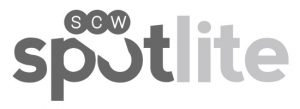 We’re always looking for great content highlighting the newest things in the world of fitness. Please submit your article directly to editor@scwfit.com for immediate consideration!
We’re always looking for great content highlighting the newest things in the world of fitness. Please submit your article directly to editor@scwfit.com for immediate consideration! Spotlite, April 9, 2025
Spotlite, January 5, 2025
Spotlite, November 11, 2024
Spotlite, September 27, 2024
Spotlite, August 31, 2024
Spotlite, July 26, 2024
Spotlite, June 22, 2024
Spotlite, May 23, 2024
Spotlite, April 26, 2024
Spotlite, March 22, 2024
Spotlite, February 19, 2024
Spotlite, January 20, 2024
Spotlite, December 21, 2023
Spotlite, November 18, 2023
Spotlite, October 22, 2023
Spotlite, September 21, 2023
Spotlite, August 19, 2023
Spotlite, July 19, 2023
Spotlite, June 19, 2023
Spotlite, May 18, 2023
Spotlite, April 21, 2023
Spotlite, March 28, 2023
Spotlite, February 18, 2023
Spotlite, January 21, 2023
Spotlite, December 16, 2022
Spotlite, November 19, 2022
Spotlite, October 22, 2022
Spotlite, September 24, 2022
Spotlite, August 23, 2022
Spotlite, July 22, 2022
Spotlite, June 20, 2022
Spotlite, May 18, 2022
Spotlite, April 20, 2022
Spotlite, March 25, 2022
Spotlite, February 17, 2022
Spotlite, January 14, 2022
Spotlite, December 17, 2021
Spotlite, November 18, 2021
Spotlite, October 25, 2021
Spotlite, September 16, 2021
Spotlite, August 9, 2021
Spotlite, July 10, 2021
Spotlite, June 8, 2021
Spotlite, May 14, 2021
Spotlite, April 30, 2021
Spotlite, March 30, 2021
Spotlite, February 23, 2021
Spotlite, January 20, 2021
Hyatt Regency Dulles
Herndon, VA
Hyatt Regency SF Airport
Burlingame, CA
Caribe Royale Orlando
Orlando, FL
May 1-4, 2025
May 2026
Grand Hyatt Atlanta Buckhead
Atlanta, GA
July 24-27, 2025
July 2026
Westin Galleria Dallas
Dallas, TX
August 21-24, 2025
August 28-30 2026
Rosemont Chicago O’Hare
Rosemont, IL
Oct. 2-5, 2025
Oct. 2-4 2026
Doubletree by Hilton
Danvers, MA
Nov. 13-16, 2025
Nov. 13-15, 2026

